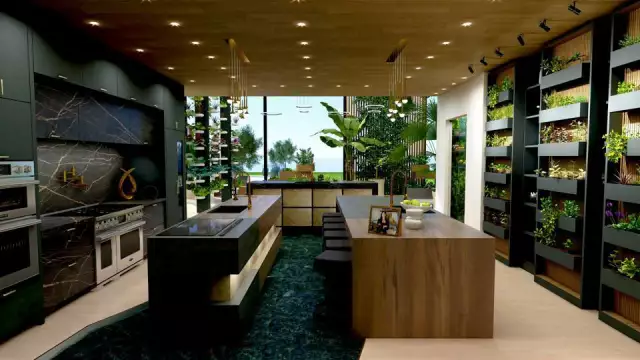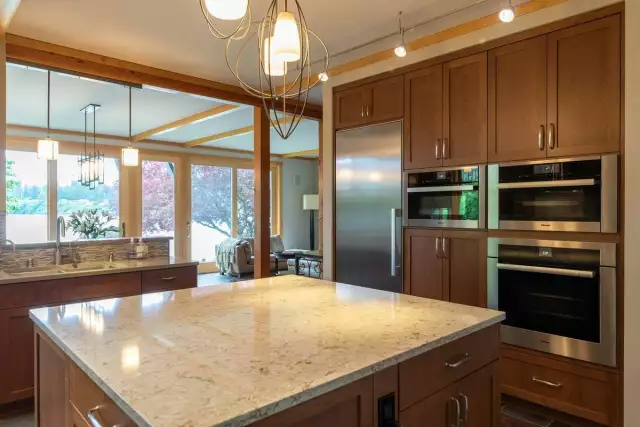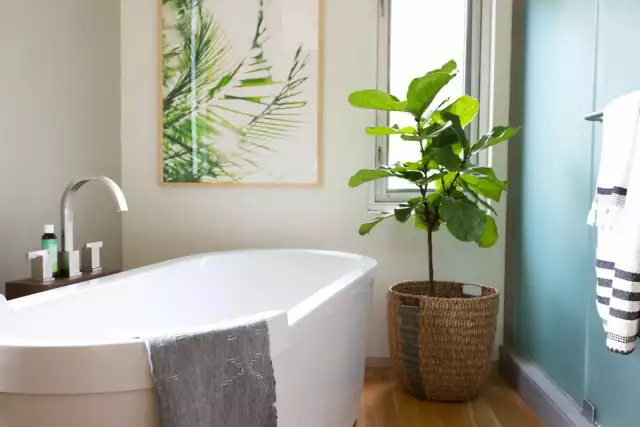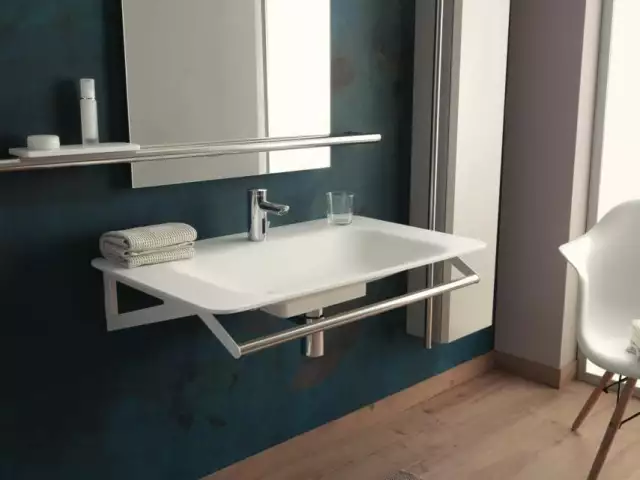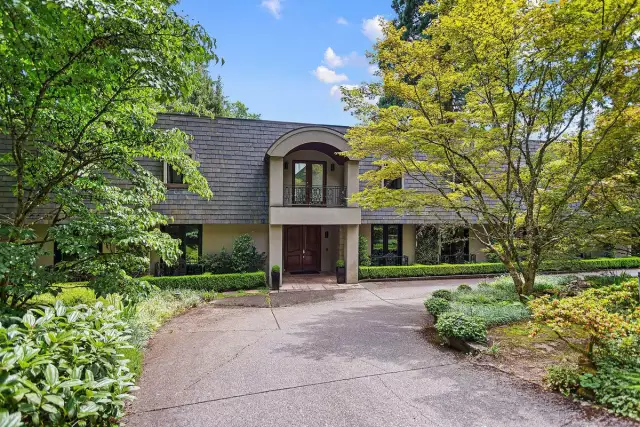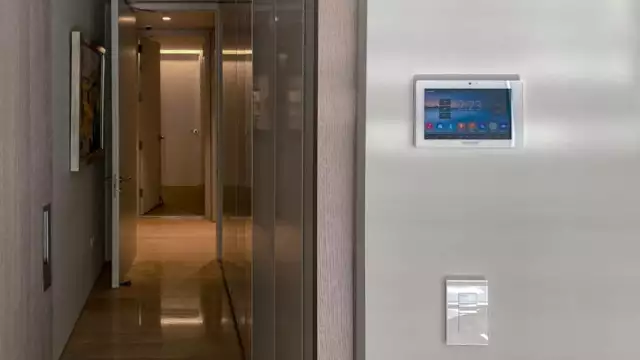Increasingly Popular As Design Features, Plants Add Wellness And Style Benefits To Home Spaces
Increasingly Popular As Design Features, Plants Add Wellness And Style Benefits To Home Spaces
Increasingly Popular As Design Features, Plants Add Wellness And Style Benefits To Home Spaces
Plant features are increasingly popular in residential design, as this virtual showcase home ... [+] handsomely demonstrates.
ARIANA AFSHAR LOVATO / (C) SEASONAL LIVINGPlant features are increasingly popular in residential design, as this virtual showcase home ... [+] handsomely demonstrates.
“There is a whole new group of ‘plant parents’ and they are absolute beginners,” declares Lisa Steinkopf, blogging since 2011 as The Houseplant Guru and the author of four indoor gardening books, including Bloom, (August 2022). Many of these new plant buyers got started during the pandemic, (myself included), but indoor gardening was already becoming a trending hobby among Millennials pre-Covid.
Pandemic Plant Enthusiasm
Plants and plant care can enhance happiness at home.
gettyPlants and plant care can enhance happiness at home.
“One of the most important things we found is that consumers felt plants helped them throughout the pandemic deal with stressful thoughts and feelings,” reports Grower Talks, an industry publication, quoting a University of Florida professor. The publication predicts that houseplant sales will continue to grow, attributing it to buyer happiness. “Houseplants make people feel good,” the professor added.
Mental Health Benefits of Plants
Living walls, also called green walls, are a trending plant feature.
Soltech Solutions. Design/Photography by Callie England // Wellness by Design (Tiller Press, 2020) (c) J. GoldLiving walls, also called green walls, are a trending plant feature.
I cited a Medical Construction & Design trade journal article in my Wellness by Design book pointing to studies with natural elements, including plants, aiding in healing, reducing stress and anxiety, and even lessening the need for pain relief. That’s not to claim that your new ficus or fern is comparable to medical care but, as Mulhall notes, “Most people spend more than 85% of their lives indoors, so those spaces are a big influence on your health.”
“People want to be surrounded by plants in the places where they decompress the most,” says Pismo Beach, California-based interior designer Ariana Lovato. She is increasingly asked to incorporate built-in plant features to the spaces she creates. “The rooms we design the most built-in pieces for would be the primary bathroom and living room,” she says. Kitchens are also popular spots for plants, judging by images circulating online. Several kitchen storage companies make plant holders specifically for these busy rooms.
Living walls are becoming a frequent request for Lovato too. Those can be created for indoor or outdoor spaces and add visual warmth. Herb walls are also popular trends. “For the Seasonal Living Virtual Showhouse, we designed a hydroponic wall system so the owners could grow their own herbs and still have it look stylish.” It was one of the standout features of this online-only showcase home presented during the pandemic.
Physical Benefits of Plants
Built-in features are getting added to kitchens for herbs, greens and other nutritional plants.
BLANCO // Wellness by Design (Tiller Press, 2020) (c) J. GoldBuilt-in features are getting added to kitchens for herbs, greens and other nutritional plants.
The plants you add to your home can have a positive influence on your well-being, including physical health. “There is a close association between the quality of your indoor environment and risk factors leading to heart disease, so something to pay close attention to,” Mulhall suggests.
Plants can also have an air cleaning effect, but that’s going to depend on the room, the plants and other environmental factors. “It’s best to combine plants with an effective air cleaning system in your house,” the environmental specialist advises.
He also notes that houseplants can be part of a healthy diet. “Very young vegetables like cabbages and radishes contain lots of vitamins C, K, and E. Micro-greens are full of antioxidants likes polyphenols, which can lower heart disease risk by helping your body repair the elastic in your arteries,” one of his focuses as an entrepreneur, based on Clemson University technology. “There are some interesting crossovers between medicinal house plants and heart health. A lot of herbs are anti-inflammatory and antibacterial. Chamomile, basil, and thyme are examples.”
Plant Tips and Trends
Grow lights and self-watering features make plant 'parenting' easier and often more successful.
NobiliaGrow lights and self-watering features make plant 'parenting' easier and often more successful.
While the pros outweigh the cons by a long shot, Mulhall believes, there are some issues to consider in growing plants. If mold develops, that’s a problem, he points out. (Some people are allergic to it.) Some people are also allergic to flowering plants. That’s something to consider before bringing one home. Some plants are harmful to pets; the ASPCA maintains a list of those, (which houseplant maven Steinkopf recommends for readers). Plants can also attract insects, Mulhall warns. “If you start using toxic pesticides to control bugs, you’re defeating the purpose; there are safe alternatives.”
One of the biggest cautions of plant parenting may be loss. The most common question Steinkopf gets is “what is wrong with my plant?” she shares. “People send pictures of plants with spots, dead leaves, insects, and mites and ask me to diagnose the problem.”
The most important aspect of successful growing is choosing the right plant for the right spot in your home, she comments. “Know which exposure your home faces so you know which plants will work for your environment.”
Lovato keeps this in mind for her clients, especially as they’re getting busier with less time for plant care. “Most people desire plants that are easy to take care of. We also make sure we're placing plants in the right locations. Hanging house plants is a fun trend right now,” she observes.
There are some systems available today to make successful growing easier, Steinkopf says. Electric lights that can give plants exactly what they crave is a trend she suggests for beginners. “Budget-friendly lights work great and are an economical way to grow a lot of plants in a small space.”
Self-watering pots are popular now too, and an easy way to keep your plants hydrated. (Lovato says her clients love their convenience factor.) The soil needs to be extra porous so that it doesn’t stay too wet and drainage is essential, Steinkopf instructs. “Many people are under the impression that all they need is drainage material. Though growing a plant in a container with no drainage hole is possible, it isn’t easy and for new plant parents especially, a hole is a must.”
Last Words
You can even turn a tiny balcony into an urban garden.
gettyYou can even turn a tiny balcony into an urban garden.
“Learning the benefits of different types of plants is super important and interesting,” Lovato says. Her California homeowner clients invest heavily in landscape and indoor plants, but you don’t need a great climate or gigantic budget to make plants work for your home and life.
***
AUTHOR’S NOTE:
Lovato, Mulhall and Steinkopf will be sharing their plant insights in an hour-long Clubhouse conversation tomorrow afternoon at 4 pm Eastern/1 pm Pacific. You can join this WELLNESS WEDNESDAYS discussion here. If you’re unable to attend, you can catch the recording via Clubhouse Replays or the Gold Notes design blog here next Wednesday.
